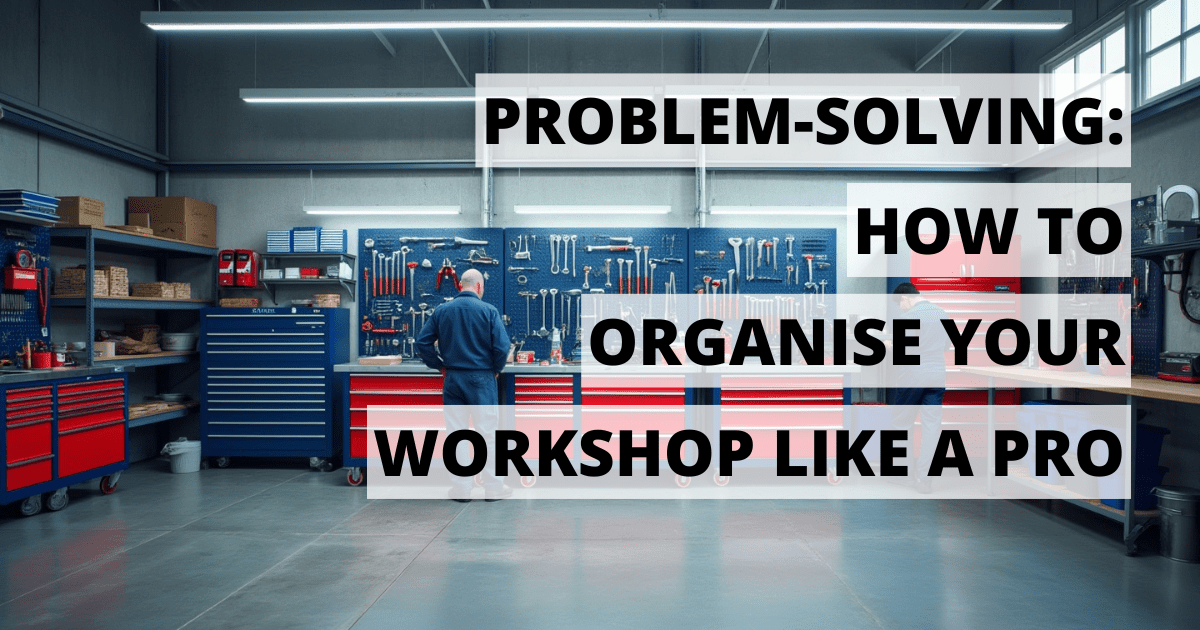Let’s face it—if you’ve ever spent more time hunting for a spanner than using it, your workshop needs a serious overhaul. Whether you’re running a busy plant hire business, managing a farm, or keeping commercial vehicles on the road, a disorganized workshop slows you down and costs money. Tools get misplaced, stock gets forgotten, and jobs take longer than they should.
But don’t worry—organizing your workshop like a pro doesn’t require a full renovation or a project manager. It just takes a smart approach, the right gear, and a little discipline. Let’s dive into how to transform your workspace into a streamlined productivity machine.
Step 1: Zone In—Create Logical Work Zones
The first rule of workshop organization: group by function.
Instead of having all your tools in one jumbled area, break your space into clear zones—like mechanical repairs, fabrication, welding, diagnostics, and so on. Each zone should have the tools, consumables, and equipment needed for that task within arm’s reach.
Got a welding station? Keep the welding wire, clamps, gloves, and spare tips right there. Doing diagnostics on vehicles? Your multimeter, code reader, and wiring diagrams should live in that zone. This saves steps, reduces clutter, and stops your tools from wandering off.
Step 2: Invest in Quality Storage (That Works as Hard as You Do)
You can’t organize properly if your storage system is older than your tractor. Sturdy, mobile, and modular—those are the storage buzzwords to look for.
At Multimax Direct, we recommend Sealey’s heavy-duty tool chests and modular storage systems. They’re built for rugged workshop use, with smooth ball-bearing drawers, high load capacity, and lockable compartments. Plus, they’re mobile—so you can bring the tools to the job, not the other way around.
Pro tip: Use shadow boards for hand tools. A pegboard with tool outlines helps you instantly see what’s missing—and encourages everyone to put tools back where they belong.
Step 3: Label Everything (Seriously)
Labelling isn’t just for neat freaks. It’s a lifesaver when the workshop’s buzzing, the phone’s ringing, and someone’s yelling for a torque wrench. Clear, consistent labels reduce confusion and help every team member find what they need—fast.
Use bold, easy-to-read labels on drawers, bins, cabinets, and containers. Color coding works too—red for electrical, blue for pneumatics, yellow for lubricants, etc.
Sealey’s stackable parts storage bins with label slots are a workshop favourite. They’re perfect for sorting fasteners, fittings, fuses, and more.
Step 4: Get Ruthless with Inventory
Every workshop has that one shelf filled with “might-need-one-day” parts. Spoiler: you probably won’t. Clutter breeds chaos, so schedule regular clear-outs. If it hasn’t been used in a year and it’s not critical stock, it’s probably dead weight.
Then, set minimum stock levels for essentials—fasteners, gloves, cutting discs, sealants—and keep track with a simple spreadsheet or whiteboard system. You’ll avoid last-minute scrambles and rushed supplier runs.
Need restocking? Multimax Direct carries a full range of Sealey consumables—abrasives, tapes, hand cleaners, grease, and more—all in workshop-friendly bulk sizes.
Step 5: Make Clean-Up Part of the Job
A tidy workshop isn’t a one-time project—it’s a habit. Build cleanup into the end of every job. Wipe down benches, return tools, restock consumables, and sweep the floor. It’s quicker than you think, and it sets the standard for everyone else.
Set up cleaning stations in each zone. A wall-mounted Sealey paper roll dispenser, hand cleaner, and bin are a good start. It sends the message: this is a professional space, and we treat it that way.
Step 6: Involve the Team
If you’re not the only one using the workshop, then organization has to be a team sport. Involve your crew in setting up the zones, choosing storage solutions, and deciding what stays or goes. When people have input, they’re more likely to stick to the system.
Hang a whiteboard where you can post jobs, notes, or “missing tool alerts”. It keeps communication flowing and helps catch small problems before they become big ones.
Conclusion: Build a Workshop That Works for You
Organizing your workshop isn’t just about aesthetics—it’s about efficiency, safety, and sanity. With smart zoning, solid storage, regular upkeep, and a few trusty Sealey products from Multimax Direct, you’ll spend less time searching and more time doing.
Ready to level up your workshop?

